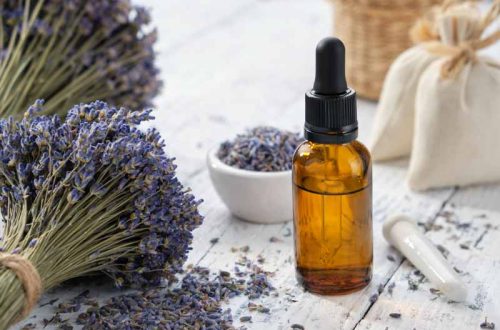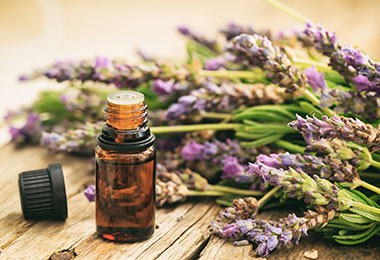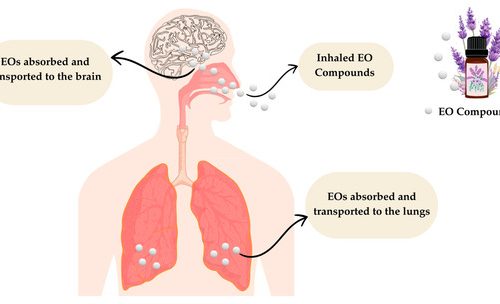Topical application is one of the most direct and effective methods for experiencing the therapeutic benefits of essential oils. When applied to the skin, these concentrated plant essences can penetrate through the dermis and enter the bloodstream, delivering their healing compounds to specific areas or throughout the body. However, the potency that makes essential oils so effective also makes them potentially irritating or harmful if not used correctly. Understanding the principles of safe topical application ensures that you can harness the full benefits of aromatherapy while protecting your skin and overall health.
The key to successful topical use lies in proper dilution, careful selection of application sites, and awareness of individual sensitivities. By following established safety guidelines and respecting the powerful nature of these plant concentrates, you can create targeted treatments for everything from minor skin irritations to muscle tension, all while maintaining the highest standards of personal safety.
Introduction to Topical Application
Understanding how essential oils interact with the skin:
How Oils Penetrate the Skin
- Absorption Pathways: Essential oils penetrate through hair follicles and sweat glands more readily than through the epidermis
- Molecular Size: Small, lipid-soluble molecules pass through skin barriers most effectively
- Blood Supply: Areas with rich circulation (wrists, neck, feet) facilitate faster systemic absorption
- Temperature Effect: Warm skin increases permeability and enhances absorption rates
Therapeutic Benefits
- Localized Treatment: Direct application to problem areas can provide targeted relief
- Systemic Effects: Absorbed oils can influence body systems beyond the application site
- Skin Health: Many oils possess antimicrobial, anti-inflammatory, and regenerative properties
- Rapid Onset: Topical application often provides faster relief than inhalation methods
Why You Must Dilute
Understanding the critical importance of proper dilution:
Concentration Concerns
- Potency Levels: Essential oils are 50-100 times more concentrated than herbal teas or tinctures
- Skin Sensitivity: Undiluted oils can strip the skin’s protective barrier and cause cellular damage
- Sensitization Risk: Repeated exposure to undiluted oils can create allergic reactions over time
- Waste of Product: Proper dilution ensures oils are used efficiently without causing harm
Scientific Basis
- LD50 Values: The lethal dose for 50% of test subjects demonstrates the potency of essential oils
- Dermal Limits: Research-established safe exposure levels guide proper dilution ratios
- Thermal Effects: Undiluted oils can generate heat when in contact with skin, causing burns
- Chemical Interactions: Concentrated compounds can react with skin proteins and cause damage
How to Dilute
Mastering safe dilution techniques:
Standard Dilution Guidelines
- Adults: 2-3% dilution (12-18 drops per ounce of carrier oil)
- Children (2+ years): 1% dilution (6 drops per ounce of carrier oil)
- Elderly or Sensitive Individuals: 1-2% dilution (6-12 drops per ounce)
- Facial Applications: 1% dilution for all users due to sensitive facial skin
- Choose Carrier Oil: Select an appropriate carrier oil based on skin type and intended use
- Measure Precisely: Use a dropper or measuring device to count exact drops of essential oil
- Combine Ingredients: Add essential oils to carrier oil in a clean glass container
- Mix Thoroughly: Cap and shake vigorously to ensure even distribution
- Label Clearly: Mark container with ingredients, concentration, and preparation date
Best Places to Apply
Strategic application sites for maximum benefit:
High Absorption Areas
- Wrist Pulse Points: Easy access and good circulation for quick systemic effects
- Neck and Shoulders: Large surface area with excellent blood flow
- Feet Soles: Highly absorbent skin that can handle stronger dilutions
- Behind Ears: Thin skin and proximity to lymph nodes for rapid distribution
Targeted Application Sites
- Temples: For headache or tension relief (use gentle oils only)
- Abdomen: For digestive support or menstrual discomfort
- Lower Back: For muscle tension or kidney support
- Chest: For respiratory support (avoid delicate throat area)
- Joints: Direct application to affected areas for localized relief
Application Techniques
- Apply to clean, dry skin for optimal absorption
- Use gentle massage to enhance circulation and penetration
- Avoid sensitive areas like eyes, mucous membranes, and broken skin
- Rotate application sites to prevent sensitization
- Start with smaller amounts and increase gradually as tolerated
Carrier Oil Selection
Choosing the right base for your essential oil blends:
Popular Carrier Options
- Jojoba Oil: Closely mimics skin’s natural sebum; excellent for all skin types
- Sweet Almond Oil: Lightweight and nourishing; suitable for most applications
- Coconut Oil: Solid at room temperature but melting; deeply moisturizing
- Grapeseed Oil: Light, non-greasy option; ideal for oily or acne-prone skin
- Apricot Kernel Oil: Rich in vitamins A and E; perfect for sensitive or mature skin
Specialty Carriers
- Aloe Vera Gel: Water-based option for cooling applications
- Hyaluronic Acid: For anti-aging applications and enhanced hydration
- Shea Butter: Thick, protective option for intensive moisturizing
- Witch Hazel: Astringent properties for oily skin or minor irritations
Safety Testing and Precautions
Protecting yourself from adverse reactions:
Contraindications
- Photosensitivity: Citrus oils (especially bergamot) can cause severe burns when exposed to sunlight
- Pregnancy: Certain oils like clary sage and rosemary should be avoided during pregnancy
- Medical Conditions: Epilepsy, high blood pressure, and hormone-sensitive conditions require special consideration
- Medication Interactions: Some oils can interact with prescription medications
Special Populations
- Infants and Young Children: Use extreme dilution (0.5-1%) and only gentle oils
- Elderly Individuals: Skin becomes more sensitive with age; adjust concentrations accordingly
- Pets: Many essential oils are toxic to animals, especially cats
- Allergy Sufferers: Exercise extra caution and consider professional guidance
Application Methods and Tools
Techniques for effective and safe topical use:
Application Tools
- Glass Droppers: For precise measurement and controlled application
- Roller Bottles: Pre-diluted blends for convenient, mess-free application
- Cosmetic Sponges: For even distribution over larger areas
- Cotton Rounds: For facial applications and sensitive areas
Application Techniques
- Direct Application: For targeted treatment of specific areas
- Compression Method: Apply to cloth and place on affected area for extended contact
- Massage Integration: Combine with gentle massage for enhanced circulation
- Layering Approach: Apply to moisturized skin for better absorption
Storage and Shelf Life
Maintaining oil quality and safety:
Proper Storage
- Dark Glass Containers: Amber or cobalt bottles protect oils from light degradation
- Cool, Dry Location: Store away from heat sources and direct sunlight
- Tight Sealing: Prevent oxidation by keeping containers tightly closed
- Labeling: Clearly mark contents, concentration, and preparation dates
Shelf Life Guidelines
- Fresh Blends: 6-12 months when stored properly in cool, dark conditions
- Citrus-Heavy Blends: 3-6 months due to faster oxidation of citrus oils
- Signs of Spoilage: Rancid odors, color changes, or thickened consistency
- Batch Size: Make smaller quantities for more frequent use and better freshness
Troubleshooting Common Issues
Addressing problems that may arise during use:
Skin Reactions
- Irritation: Reduce concentration or switch to gentler carrier oils
- Allergic Responses: Discontinue use and consult healthcare provider
- Sensitization: Rotate oils and reduce frequency of application
- Dryness: Increase carrier oil proportion or switch to more moisturizing options
Application Problems
- Greasy Feeling: Reduce oil amount or switch to lighter carrier oils
- Poor Absorption: Exfoliate gently before application or warm the oil slightly
- Staining: Use lighter-colored oils or apply smaller amounts
- Inconsistent Mixing: Shake blends thoroughly before each use
Special Applications
Advanced techniques for specific needs:
Therapeutic Blends
- Pain Relief: Wintergreen, peppermint, and eucalyptus in appropriate carriers
- Skin Healing: Lavender, tea tree, and chamomile for minor cuts and irritations
- Anti-aging: Frankincense, geranium, and rose in nourishing carrier oils
- Cellulite Reduction: Grapefruit, cypress, and juniper in stimulating carrier blends
Cosmetic Applications
- Facial Serums: Lightweight oils with anti-aging or balancing properties
- Body Treatments: Richer blends for intensive moisturizing and nourishment
- Hair Care: Scalp treatments and hair conditioning blends
- Lip Care: Gentle, nourishing oils for delicate lip tissues
Educational and Social Benefits
Beyond personal care, topical aromatherapy offers broader advantages:
Learning Opportunities
- Botanical Knowledge: Develop understanding of plant properties and extraction methods
- Anatomy Awareness: Learn about skin structure and absorption pathways
- Chemistry Education: Understand how molecular structure affects skin interaction
Community Engagement
- Family Care: Create safe, natural options for household wellness
- Skill Sharing: Teach friends and family about safe aromatherapy practices
- Gift Giving: Package homemade blends as thoughtful, personalized presents
Environmental and Economic Benefits
Natural topical applications offer advantages beyond personal wellness:
Eco-Friendly Aspects
- Biodegradable Ingredients: Plant-based oils break down naturally without environmental harm
- Reduced Packaging: Bulk purchasing and reusable containers minimize waste
- Sustainable Sourcing: Many oils come from renewable plant sources when ethically produced
- Chemical-Free: No synthetic preservatives or fragrances to contaminate water systems
Cost Effectiveness
- Ingredient Longevity: Small amounts of quality oils last for numerous applications
- Multi-Purpose Use: Same oils can be used for aromatherapy, cleaning, and personal care
- Reduced Commercial Products: Less need for separate skincare and wellness products
- Preventive Care: Addressing issues early may reduce healthcare costs
Advanced Techniques
For those wanting to expand their topical aromatherapy knowledge:
Professional-Grade Approaches
- Herbal Infusions: Create specialized carrier oils with dried herbs for added benefits
- Emulsion Techniques: Combine oils with water-based ingredients for unique applications
- Seasonal Formulations: Adjust blends based on climate and skin needs throughout the year
Application Enhancements
- Heat Activation: Warm oils slightly for improved penetration and relaxation
- Compress Methods: Hot or cold compresses with essential oil infusions
- Specialized Tools: Jade rollers or gua sha tools to enhance application and effects
Conclusion: The Foundation of Safe Aromatherapy
Topical application of essential oils represents one of the most direct and effective methods for experiencing the therapeutic benefits of aromatherapy, but it also requires the greatest attention to safety and proper technique. By understanding and respecting the potent nature of these concentrated plant essences, you can unlock their remarkable healing potential while protecting yourself from potential harm. The practice of safe dilution, careful application, and mindful observation creates a foundation for wellness that extends far beyond simple fragrance.
The journey into topical aromatherapy is one of increasing sensitivity and awareness – not just of the oils themselves, but of your own body’s responses and needs. As you develop your skills in safe application, you’ll discover that this practice cultivates a deeper connection to your physical self and the natural world that provides these remarkable healing gifts. Each carefully prepared blend becomes an act of self-care that honors both your wellness goals and your responsibility to use powerful substances wisely.
In our modern world filled with synthetic products and chemical-laden personal care items, the practice of creating and applying your own essential oil blends represents a return to simpler, more natural approaches to wellness. It’s a form of self-empowerment that puts the tools of healing directly in your hands while connecting you to ancient traditions of plant-based medicine. This knowledge becomes not just a personal skill but a gift you can share with family and friends, spreading awareness of safe, effective natural wellness practices.
Most importantly, mastering safe topical application of essential oils transforms these remarkable plant essences from potentially dangerous substances into reliable tools for health and well-being. The discipline required to properly dilute, carefully apply, and mindfully observe your body’s responses creates a framework for all natural wellness practices. It’s a skill that serves as both foundation and gateway – fundamental to safe aromatherapy use and opening doors to more advanced applications and deeper healing experiences.





